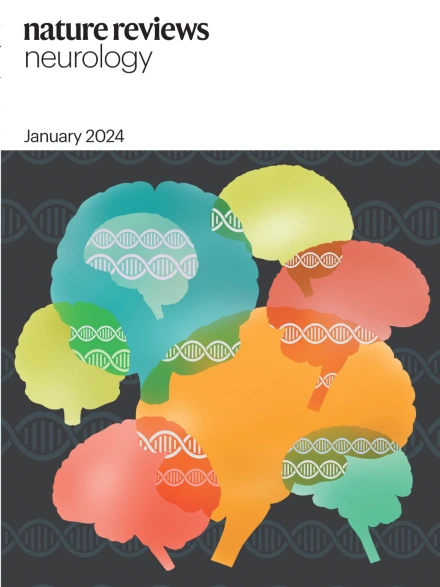Non-invasive brain stimulation: current and future applications in neurology.
IF 33.1
1区 医学
Q1 CLINICAL NEUROLOGY
引用次数: 0
Abstract
Device-based non-invasive brain stimulation (NIBS) techniques show promise for the treatment of neurological and psychiatric disorders, although inconsistencies in protocol designs and study findings can make the field difficult to navigate. In this Review, we discuss applications of NIBS for enhancing cognitive and motor function in people with various neurological diseases that are characterized by disruption of large-scale brain networks, including neurodegenerative diseases and brain lesion disorders such as stroke and traumatic brain injury. In particular, we focus on repetitive transcranial magnetic stimulation and transcranial electrical stimulation, as these techniques have been widely used in clinical settings and randomized controlled trials. We summarize and synthesize current knowledge, and highlight gaps and shortcomings in the existing research that make it difficult to draw firm conclusions, including small sample sizes, heterogeneous patient populations and variations in stimulation protocols. We believe that a rapid evolution of NIBS techniques from state-dependent, network-informed, multifocal and subcortical paradigms to individualized electric field modelling and accelerated NIBS protocols will improve the management of neurological disorders. However, realizing this potential will require us to address crucial challenges and acquire deeper mechanistic insights, with the aim of developing adaptive, biomarker-driven protocols to optimize target engagement, dosing and timing for each patient.非侵入性脑刺激:神经病学的当前和未来应用。
基于设备的非侵入性脑刺激(NIBS)技术显示出治疗神经和精神疾病的希望,尽管方案设计和研究结果的不一致可能使该领域难以导航。在这篇综述中,我们讨论了NIBS在各种以大规模脑网络破坏为特征的神经系统疾病患者中的应用,包括神经退行性疾病和脑损伤疾病,如中风和创伤性脑损伤。我们特别关注重复经颅磁刺激和经颅电刺激,因为这些技术已广泛应用于临床环境和随机对照试验。我们总结和综合当前的知识,并强调现有研究中的差距和不足,这些差距和不足使得难以得出确切的结论,包括小样本量,异质患者群体和刺激方案的变化。我们相信NIBS技术从状态依赖、网络信息、多焦点和皮层下范式到个体化电场建模和加速NIBS方案的快速发展将改善神经系统疾病的管理。然而,要实现这一潜力,我们需要解决关键的挑战,并获得更深入的机制见解,以开发自适应的、生物标志物驱动的方案,以优化每位患者的靶标参与、剂量和时间。
本文章由计算机程序翻译,如有差异,请以英文原文为准。
求助全文
约1分钟内获得全文
求助全文
来源期刊

Nature Reviews Neurology
医学-临床神经学
CiteScore
29.90
自引率
0.80%
发文量
138
审稿时长
6-12 weeks
期刊介绍:
Nature Reviews Neurology aims to be the premier source of reviews and commentaries for the scientific and clinical communities we serve. We want to provide an unparalleled service to authors, referees, and readers, and we work hard to maximize the usefulness and impact of each article. The journal publishes Research Highlights, Comments, News & Views, Reviews, Consensus Statements, and Perspectives relevant to researchers and clinicians working in the field of neurology. Our broad scope ensures that the work we publish reaches the widest possible audience. Our articles are authoritative, accessible, and enhanced with clearly understandable figures, tables, and other display items. This page gives more detail about the aims and scope of the journal.
 求助内容:
求助内容: 应助结果提醒方式:
应助结果提醒方式:


